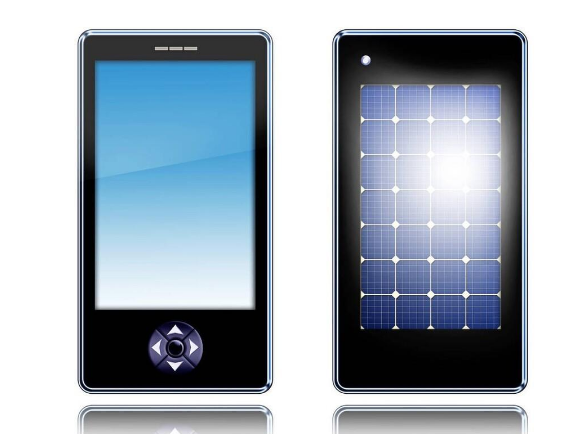The solar panels don't give it enough power to charge the telephone.
A contemporary smartphone is about 0.01 square meters, a large high-end phone is likely close to that, and an economy model is less. Under STC standard data, solar panels or solar extension cable produce about 1 kilowatt of energy per square meter (but again depending on the weather and where the sun is directly in the sky), so a telephone lying flat on its back, assuming that the solar panels on its surface are exposed to sunlight, will receive about 10 watts of energy (theory). Solar panels are not very effective, usually less than 20 percent efficient. Consequently, in good weather, the actual power is only 2W. (I have taught the calculation formula of solar panels before to know the length and width: P= length (cm)* width (cm)* 0.1* conversion efficiency -- P=0.01*1000*20%=2W)
 Second not only to consider the weather reason, there are a series of, your mobile phone can't 24 hours in the sun, when not feasible in his pocket, and may also be in the bag, after all, now mobile phone value isn't inexpensive, 2000-3000 yuan or so a mid-range level of consumption, there is a now numerous bank CARDS, mobile phone number binding WeChat, pay treasure, Once this is lost, it can cause considerable damage, and all the information has to be replaced. Another solar cell phone can not be used at night, only rely on solar power to generate electricity. The current 5V/2A quick-charge plug is better than solar power for charging your telephone.
Second not only to consider the weather reason, there are a series of, your mobile phone can't 24 hours in the sun, when not feasible in his pocket, and may also be in the bag, after all, now mobile phone value isn't inexpensive, 2000-3000 yuan or so a mid-range level of consumption, there is a now numerous bank CARDS, mobile phone number binding WeChat, pay treasure, Once this is lost, it can cause considerable damage, and all the information has to be replaced. Another solar cell phone can not be used at night, only rely on solar power to generate electricity. The current 5V/2A quick-charge plug is better than solar power for charging your telephone.
Lastly, adding solar panels to phones increases complexity, vulnerability, and cost, while decreasing usability. If the solar panel is placed on the front, then it must somehow compete for space with the display, which means that the total amount of power generated will be considerably diminished and the quality of the display may suffer. If the solar panel is on the back side, it won't work as well when you're genuinely using the telephone because the camera tends to be on the back end.
Either way, solar panels insert yet another complex component and its associated circuitry into an already compact device. Consequently, without a strong improvement in the conversion efficiency of solar panels, direct installation of solar panels for charging on mobile phones still cannot satisfy the daily needs, which does more harm than good.